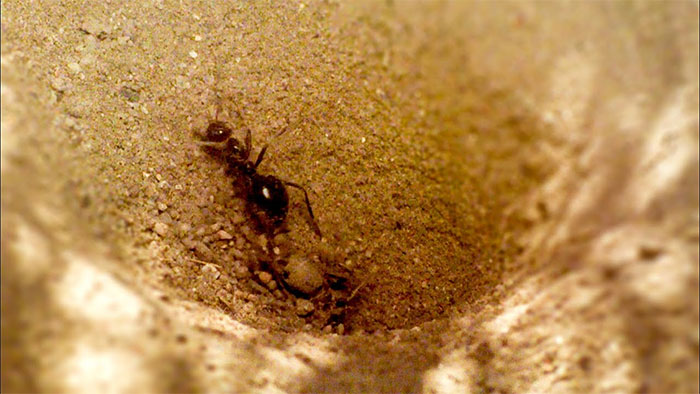Cold-blooded insects: Sand trap, sucking flesh inside prey
Hiding under a small funnel-shaped sand pit is a danger lurking around insects or even spiders. If you just go down here, the unlucky person will have almost no chance of escaping and will end up in an empty body with only the outer skin, with the flesh inside drained!
The cold-blooded killer mentioned here is the lion ant , an animal widely distributed across the globe, including our Vietnam.
While in the form of larvae, lion ants are a terror to any small insect that travels on the sand, because any sand surface that shows concave-shaped concave signs can be The lion's ant trap is set by the lion ant, in particular, to hunt, the lion ant larvae will use the tip of the abdomen to scoop up the sand with the support of the front legs, in order to create a deep funnel shaped cave. about 5cm and 7cm wide.

While in the form of larvae, lion ants are a terror to any small insect.
The clever thing is that the slope of the cave will be designed by the lion ants to reach a value called the critical reaction angle , that is, the maximum slope angle that the sand surface can hold. This means that, just a little oscillation makes the angle of the slope increases, the sand surface will collapse immediately.
Therefore, when small ant-like animals accidentally enter the sand funnel, the sand surface will easily slide, causing the animal to slide down the center of the funnel, where the lion ants are waiting. Even if the prey tries their best to crawl up, the lion ant will throw sand at the bottom of the pit, causing the surface to constantly slide down to drag the animal down.
In addition to the unique hunting method, the way the ants enjoy their meals is equally interesting. Accordingly, the insect injects a digestive enzyme into its prey, causing the internal feces to liquefy; Next, the lion ants simply vacuumed this 'meat cocktail' and released the body now empty.
- The 'terrifyingly scary' behavior of insects
- Cold-blooded creature
- What is cold-blooded animals? Basic information you need to know
- What would happen if humans were ... 'cold-blooded animals'?
- Assassin insects in nature
- Signs that dinosaurs are warm-blooded animals
- Cold-blooded animals are able to adapt quickly to climate change
- Find the virus related to blood sucking insects
- New hypothesis about dinosaurs
- Decipher the mystery of the dinosaur's blood
- 6 types of deadly pitfalls common in ancient tombs
- Blood sucking insects scatter in Africa
 Why do potatoes have eyes?
Why do potatoes have eyes? 'Tragedy' the world's largest carnivorous life: Death becomes ... public toilet
'Tragedy' the world's largest carnivorous life: Death becomes ... public toilet Tomatoes were once considered 'poisonous' for 200 years
Tomatoes were once considered 'poisonous' for 200 years Detecting microscopic parasites on human face
Detecting microscopic parasites on human face